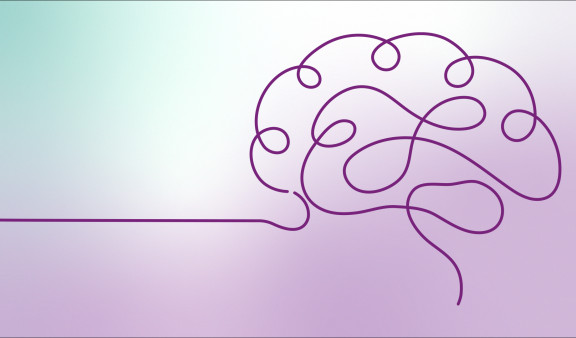
How to use content for conversion
Generating leads and/or sales is the goal of most brands when they start out. So where do you begin? In 2023 you need a good content strategy if you want people to even consider your service. Let’s explore and examine how you can create content that converts.
Good products mean good sales? Think again
Everything starts with a good product or service, sure, but if you are not visible online, you might as well not exist. As people are constantly bombarded with information, relevant or not, the challenge for your service/product to be seen has become even greater.
Google calls this avalanche of information “the messy middle”: an abundance of information, and an unlimited choice for people who want to purchase something online. However, there are some shortcuts that you as a brand can use to get yourself seen and, more importantly, get conversions.
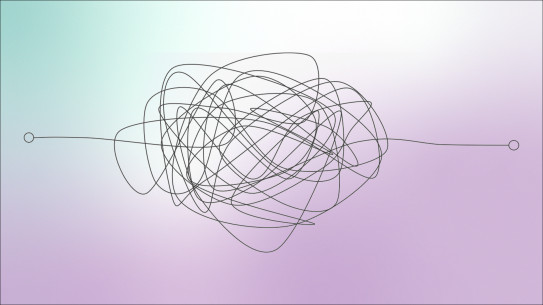
User behavior and ways of thinking: the basics
Have you ever wondered how you, as a human, make decisions? Do you consider yourself a fast decision maker, or rather someone who contemplates their every move?
People think in two kinds of ways when they are confronted with a certain kind of situation when a decision needs to be made.
- Instinct thinking: it’s quick, based on instinct and previous experience
- Thoughtful thinking: this is more critical thinking, based on an analysis of the situation
It's important to realize that Internet users are confronted with decision-making in their daily lives; sometimes they revert to their instincts, sometimes they take their time to think things over first. If you want them to convert quickly, you want them to think as instinctively as possible.
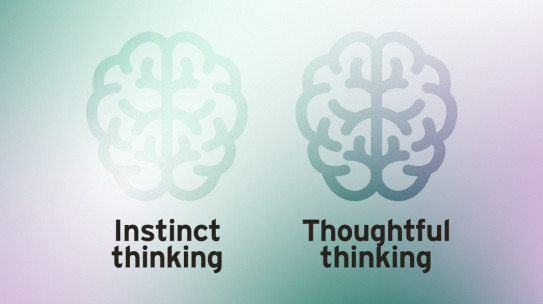
Our tips for conversion based on human cognitive shortcuts
Cognitive shortcuts are ways internet users – shoppers – have developed to navigate this “messy middle”. Let’s have a look at how you can trigger them to convert.
You should aim to reduce the amount of thinking a possible client needs to do to reduce the amount of time between the trigger provided by your content – a social media post, a promotional offer in print, a video display in the street, etc. – and their actual conversion. This plays on the heuristics principle of internalized pattern recognition in order to make a quick decision.
Cognitive shortcut – Heuristics
These are shortcuts, rules of thumb that are used to make quick and satisfactory decisions within a given category. They require less cognitive effort and the effect on decision-making is undeniable. People:
- Examine fewer pieces of information
- Rely on easy-to-access information
- Simplify the weighting of information
- Integrate less information in the decision-making process
- Consider fewer alternatives
Example: Booking.com: if you’re going on a trip and are looking for a hotel, you’ll probably click on the first result in your search engine, booking.com. will probably be the first option you’ll encounter. And you’ll use them because it will make the choice of a hotel easier because all the information you would normally filter is already processed by their tool: hotel prices, location, deals, etc.
How can you use this in digital marketing?
There are quite a few steps you can take to hurry this kind of decision-making process along as a brand, but it will require some serious thinking from your marketing department:
- Pay special attention to existing customers: make a conversion simple and easy. Don’t bother them with irrelevant information, pop-ups, and several clicks during their customer journey; they know what they want, and they want it quickly.
- Make sure your ad and website copy are consistent, without unnecessary barriers, like poor page speed or unclear messaging.
- Measure customer behavior to know what your customers need to be happy.
In addition to the tips above to reduce the cognitive burden of your visitor, also make sure that focus is pulled to what you want to highlight: in your brick-and-mortar shops, but also online by streamlining the focus on your landing pages. This way you use the default bias to guide your digital visitor to where you feel they should go.
Cognitive shortcut – Default bias
Most people will go with the flow; we accept what is presented to us. This ties in with choosing the path of least resistance, for example on your website. If your User Experience is well-adjusted to your target audience, a visitor will be automatically led to the pages you want them to visit.
Example: Cointreau’s website is focused on shopping and inspiration conversions. That’s why you’ll find a very clear structure on the homepage leading visitors to where they want to go. If they want to buy a bottle of Cointreau, the top navigation makes conversion easy, whilst the clear CTA above the fold leads to the cocktail experience page, where they can narrow down their preferences and hunt for the perfect inspiration.
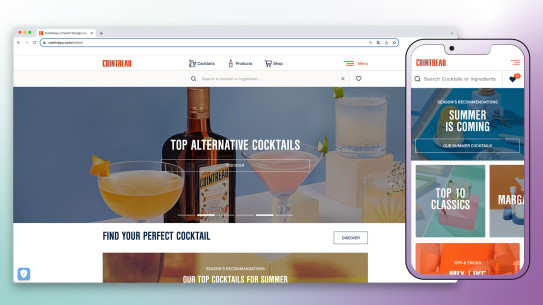
How can you use this in digital marketing?
Prioritize having segmented landing pages for different types of visitors and leads; this way they have a personalized experience, and they will feel they can find what they want that much more quickly. Answer any questions the consumer may possibly have and keep them interested in learning more.
For e-Commerce, invest in content that will show how your product makes lives easier; don’t be too specific about features and specifications, those should live on specific product pages if they are important.
Be ever-present in the moments of deliberation to win or retain consumer preference. Keep in mind you’re trying to trigger the power of heuristics and be an anchor for your customer.
Cognitive shortcut – The power of free
The number 0 holds a special power; that’s why free things are always more interesting to people than reductions. Google describes it as “an emotional hot button, which causes an irrational excitement that can drive a purchase decision.”
Example: There are countless examples to be found especially in subscription services (fitness, streaming, etc.). But a nice example of this is SortedFood’s Sidekick app. During every video on Youtube, they allude to the existence of their recipe app: they cook a recipe from the app and mention the 30-day free trial period. This way it stays top of mind, but consumers are not tied to a product they might not like.
How can you use this in digital marketing?
Make sure you have an always-on approach to your marketing, digital and offline. You want to be top of mind when people eventually switch to a buying/conversion mode. And for an extra recognition and conversion boost: why not offer a giveaway promotion, or a free trial subscription.
We always compare new resources to things or services we already know. Using the anchoring effect, you create/maintain the mental availability for your products/services.
Cognitive shortcut – Anchoring
Humans always perceive information in reference to a certain point: an anchor. As a brand this is the position you aim to claim.
Example: When you launch a soft drink with caramel and citric acid, you’ll automatically be compared to Coca Cola, as that is the anchoring point within the soft drink market.
How can you use this in digital marketing?
Put your CRM to good use, so you can use its data to qualify and categorize exploring shoppers; with this data you can create a fantastic user experience that makes exploring your offerings as easy as possible. To do this, you need to present all the relevant information a potential customer needs to make a rapid transition into evaluation and then on towards a conversion (remember heuristics?). Invest in a comprehensive search strategy, including hashtags and keywords, but don’t forget about other mediums and resources people use to access your content: price comparison engines, social media, video, and many more.
This effect is rooted in our ancient brain: this effect helps us to pick the odd one out, something that is not like the others in the same category. So, dare to be different.
Cognitive shortcut – Scarcity bias
Rare or limited resources are more desirable than items we perceive an abundance of. There are three forms of this perceived scarcity:
- Limited in time: there is a deadline involved, inducing you to act now.
- Limited in quantity: this would threaten your freedom of choice as there aren’t enough resources for everyone.
- Limited in access: exclusivity makes people feel special.
Example: You’ll find this a lot in real estate or clothing brands. There is only 1 item left of a specific piece of clothing, or only one flat left in an exclusive building.
How can you use this in digital marketing?
Be unique so you can be the anchor, the reference point as people will automatically clock something that is not like anything else they know. Use your unique story or create a unique visual style to stand apart from your direct competition (emojis, unusual characters, capital letters, …).
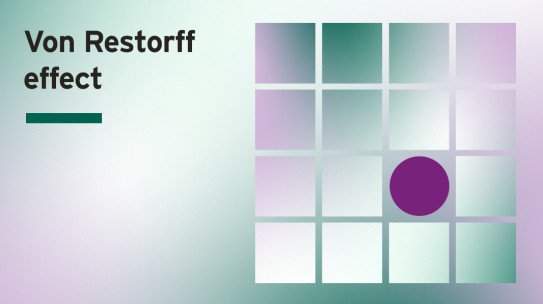
Everything is connected in our digital lifestyle, so your brand should have a consistent approach to everything: product development, finance, marketing, user experience.
The power of now
The power of now is very strong in most people. Humans are bad at long-term vision: problems need to be solved as quickly as possible. If the solution happens to present itself almost as simultaneously as the problem, most people will not hesitate to grab the opportunity with both hands. We are wired to live in the present. That’s why it’s important that your customers get a consistent story, branding and product development that speaks to them and solves their problems immediately.
Example: McDonalds is one of the top examples of a successful brand across multiple platforms; they have a consistent media presence, focusing on their star products and they don’t introduce innovation unnecessarily (or they are perceived not to). Added bonus: they can be found almost anywhere in the world. Feeling hungry, this fast-food chain is happy to help.
How can you use this in digital marketing?
Have consistent branding and style online and offline, and make sure your story stays consistent across platforms – website, social media, print, etc. – so your customer experience is consistent as well. Thinking about launching a new product? Check first if there is a need and launch it across platforms to make it readily available.
The power of content: memorable, illogical, responsible
Hopefully by now, you will have realized the immense power of content and that there is a certain art to making people think in a certain way about your product by relying on natural instincts or appealing to their rational nature. Being memorable by using a unique approach, or semantic style will always help with this, but this needs to be backed up by the rest of your content.
And as always, with great power comes great responsibility: use some of these tips sparingly as users are clever enough to recognize patterns too, and don’t always like to be played. Also keep in mind that behavioral science can only help you along in a certain way: humans are inherently illogical, and their decisions can be influenced by factors you have absolutely no control over; the weather, their general state of mind, the context of your content, etc. Luckily a positive brand experience is never wasted, so striving towards this through your content should be paramount.
